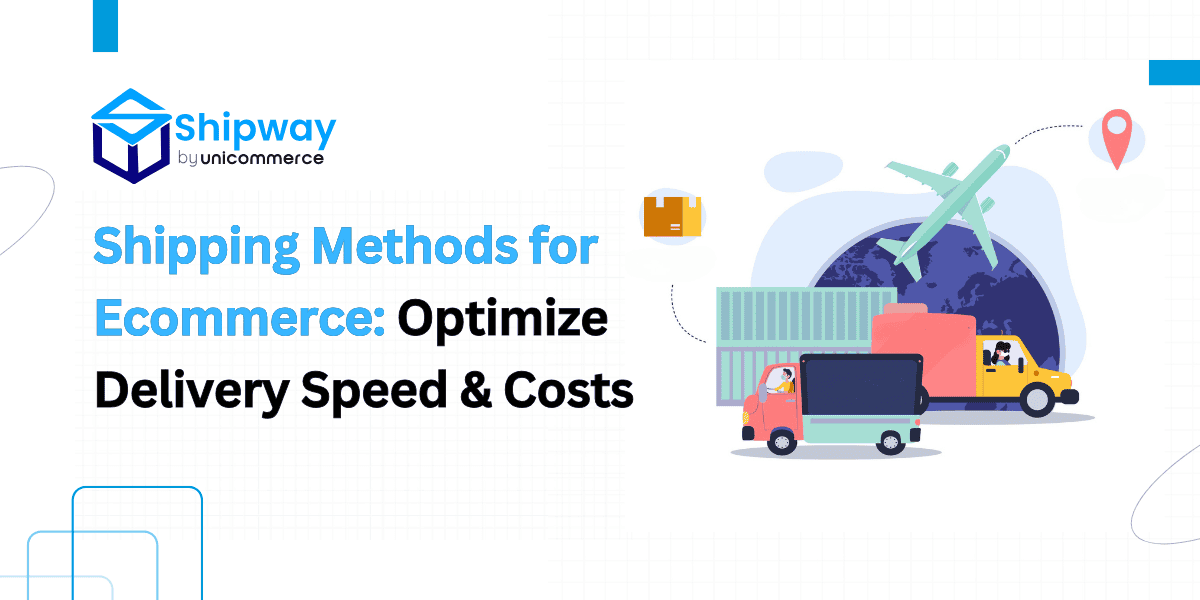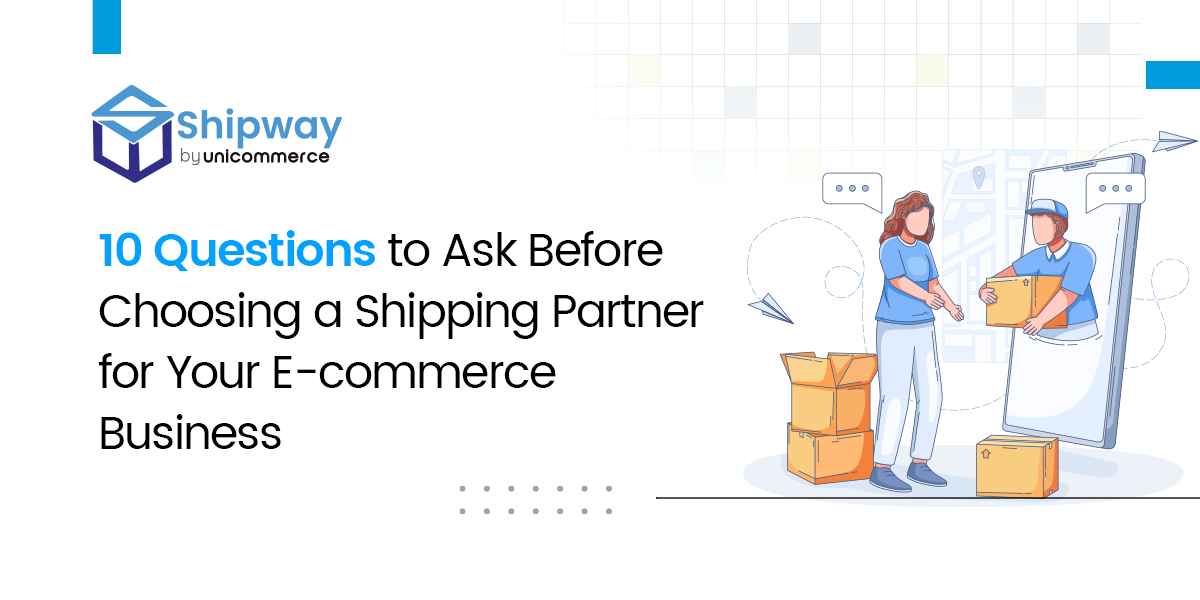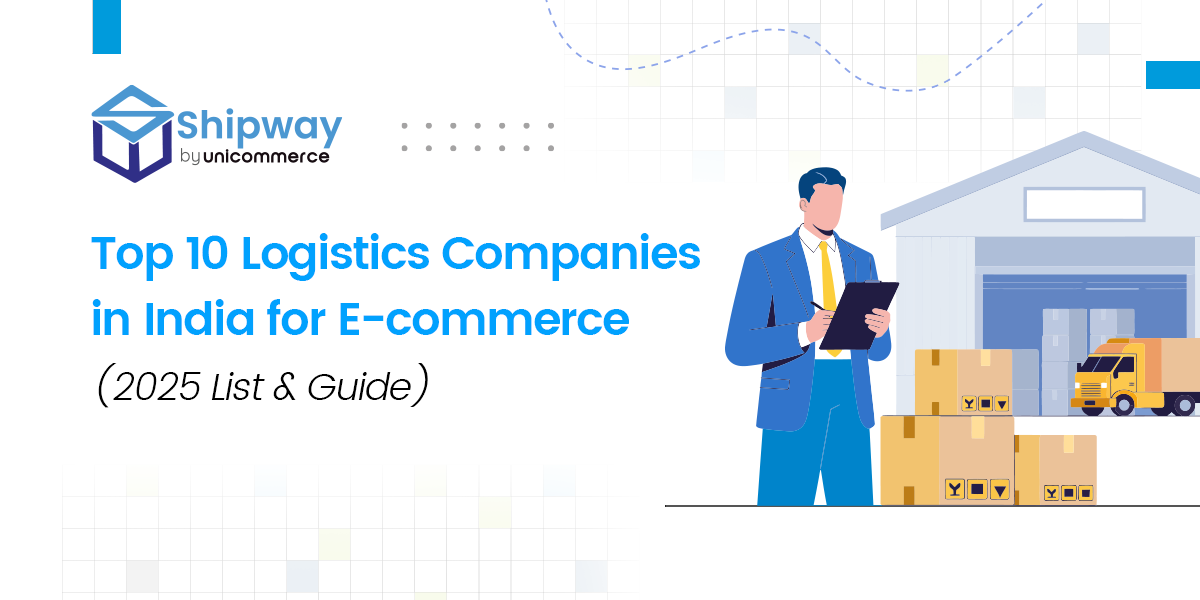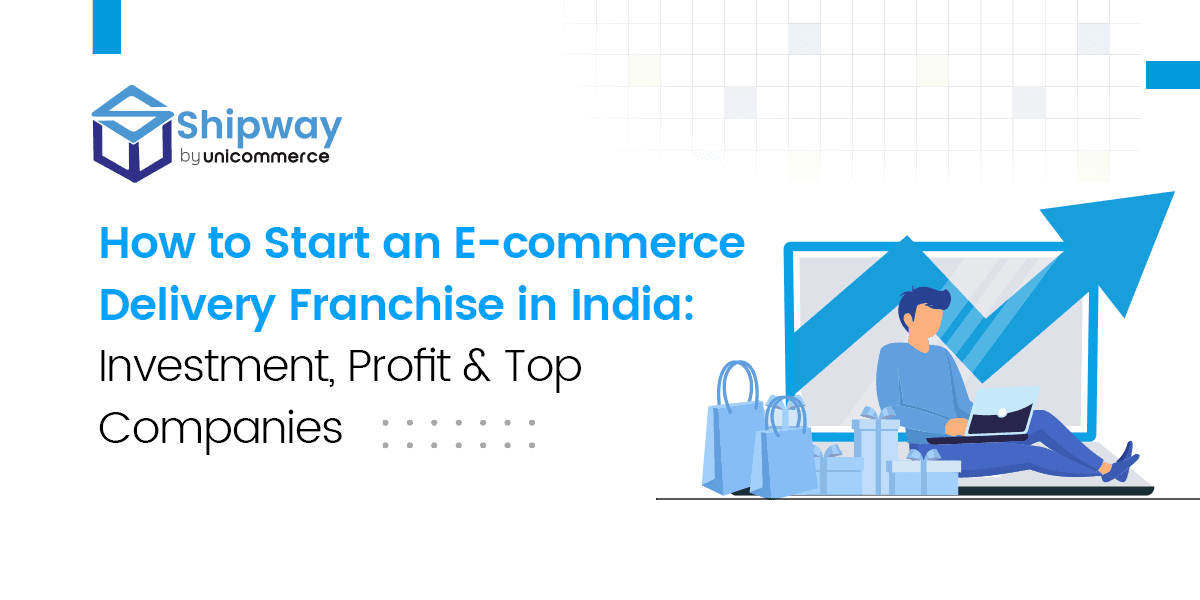Online sellers must carefully plan how products reach their buyers. Shipping methods and rates affect both delivery times and overall costs. A well-thought-out shipping plan builds trust with customers and drives more orders.
This guide explains various shipping options and rate systems. It also covers in-store pickup and returns. So let’s get started.
Why Do Shipping Methods Matter?
Shipping plays an important role in every online sale and the way you deliver products influences customer satisfaction and your profit margins. A clear shipping plan ensures buyers know what to expect. Fast and reliable delivery builds customer confidence. In addition, transparent shipping details reduce abandoned carts and improve overall sales.
Key reasons to focus on shipping methods:
- Customer Expectations: Buyers look for fast delivery. They want clear information about when an order will arrive.
- Cost Management: Shipping fees impact your profit. Keeping these costs in check is essential.
- Order Safety: Proper handling ensures products arrive intact.
- Transparency: Clear shipping details help build trust with buyers.
Studies show that a variety of shipping choices can lead to more completed purchases. When buyers know they can choose the method that suits their needs, they are more likely to finalize an order.
9 eCommerce Shipping Methods to Speed Up Deliveries
Here are 9 shipping methods that many online sellers use. Each method serves different customer needs. We present the details in paragraphs along with bullet points and numbered steps where useful.
1. Free Shipping
Free shipping means that buyers do not pay an extra fee at checkout. This method is very popular among online shoppers.
Features:
- Approximately 67% of buyers look for free shipping.
- A minimum order value is often required.
- The seller absorbs the shipping cost.
- Product prices may include the shipping fee.
Benefits:
- Give buyers the option to add more items to their cart.
- It reduces the number of abandoned carts.
- Attracts first-time buyers.
- Keeps loyal customers coming back.
Also Read: How To Offer Free Shipping On Your eCommerce Store?
2. Freight Shipping
Freight shipping is just a way where courier companies move huge amounts of packages from one place to another. It’s how businesses transport large quantities of goods like furniture, machinery, clothing, or electronics—using trucks, trains, ships, or planes.
Think of it like this: If you order a single phone case online, that’s a small package delivery. But if a company needs to send thousands of phone cases to different stores across the country, they use freight shipping. It’s cheaper and more efficient than sending everything one by one.
There are different types of freight shipping:
- Truck (Road Freight) – Best for deliveries within a country or across borders by road.
- Ship (Ocean Freight) – Used for international shipping when cost is a priority over speed.
- Plane (Air Freight) – The fastest but most expensive way to ship.
- Train (Rail Freight) – A cost-effective way to move large goods over long distances on land.
Freight Shipping Types: Choosing the Right Option for Your Ecommerce Business
- Less Than Truckload: Ideal for orders weighing between 150 – 1500 pounds.
- Full Truckload: Best for orders over 1500 pounds.
- Partial Truckload: Used when shipments are too large for LTL but not enough for a full truckload. Costs are shared among multiple shippers.
- Intermodal Shipping: It combines different transport modes like rail and truck, to optimize the delivery process.
Benefits:
- Cost-effective for shipping large orders.
3. Same-Day Delivery
Same-day delivery makes sure that the customer-requested order reaches the buyer on the day it is placed. This method is in high demand in urban areas with dense populations.
Features:
- Local inventory must be available.
- Cooperation with nearby fulfillment centers is necessary.
- Delivery partners or couriers handle the final drop-off.
Benefits:
- Minimizes waiting time.
- It improves customer satisfaction with quick delivery.
- It competes with traditional brick-and-mortar stores.
This method works best in cities or regions with many buyers. Investing in local stock and fast couriers can significantly boost your sales.
4. 2-Day Shipping
Two-day shipping has become a standard expectation among many buyers. Customers are often willing to wait up to two days for their order.
Features:
- Delivery time can be defined as two business days or two calendar days.
- Ground transport works for short distances.
- Air transport is used for long distances or for urgent orders.
Benefits:
- Reduces the chances of cart abandonment.
- Meets buyers’ expectations for quick service.
- Balances cost and delivery speed effectively.
5. Overnight Shipping
Overnight shipping promises that orders will be delivered by the next business day. Buyers opt for this service when they need products quickly.
Features:
- An extra fee is usually charged for quick delivery service.
- Delivery may occur during different phases, i.e. early morning, mid-morning, or later in the day.
- This is ideal for time-sensitive orders like medicine/urgent documents.
Benefits:
- Meets urgent buyer needs.
- Boosts confidence when handling essential items.
Overnight shipping methods are particularly useful during peak seasons or when handling special orders. Clear communication about the delivery time slots helps manage customer expectations.
6. Expedited Shipping
Expedited shipping is a premium delivery option in e-commerce that provides faster transit times compared to standard shipping. It is designed for customers who need urgent delivery and is often available at an additional cost.
While standard shipping may take several days to a week, expedited shipping ensures delivery within 1-3 days, depending on the distance and logistics provider. Also, expedited shipping depends on faster transportation modes like air freight for long-distance deliveries and surface transport (road or rail) for domestic shipments.
Features:
- Delivery occurs in less than three business days.
- Buyers pay extra for faster delivery.
- The option can be tailored to specific product types.
Benefits:
- Provides flexibility for customers with urgent needs.
- Give a premium service option.
- This increases buyer willingness to pay extra for speed.
7. Local Delivery
Local delivery works well when you have a physical store or a nearby warehouse. It includes both home delivery and in-store pickup options.
Features:
- Doorstep Delivery: A local courier brings the order directly to the buyer.
- In-Store Pickup (BOPIS): Buyers order online and pick up their products from your store.
Benefits:
- Reduces shipping fees significantly.
- Encourages buyers to visit your physical location.
- Supports local sales and strengthens community presence.
Local delivery is ideal for urban or regional markets. It helps in cutting costs while providing flexibility to buyers.
8. International Shipping
International shipping gives the option to reach buyers beyond your national borders. This method involves additional documentation and regulatory steps.
Features:
- Customs forms and tax documents are required.
- Research the rules of the destination country.
- Use partners who have experience with international deliveries.
Benefits:
- Expand your market reach.
- Increases sales from overseas buyers.
- Offers access to new customer segments.
9. Eco-Friendly Shipping
This method uses practices and some sort of internal materials that have a lower environmental impact.
Features:
- Using biodegradable or recycled packaging.
- Offering carbon offset options.
- Preferring ground transport to reduce fuel consumption.
- Recycling packaging materials after use.
Benefits:
- Attracts environmentally conscious customers.
- Supports quality business practices.
- Reduces the carbon footprint.
3 Must-Know Shipping Rate Structures to Cut Costs for Ecommerce
Shipping fees in ecommerce are a critical aspect of any business model. Different rate structures offer varied advantages. Here are three common methods used by online sellers.
1. Flat Rate Shipping
Features:
- The fee is based on the package size.
- Carriers set weight limits (e.g., 50 pounds for boxes, 10 pounds for envelopes).
- Suitable for small items that are heavy.
Advantages:
- Simplifies pricing.
- Provides predictable shipping costs.
- Makes it easier to calculate final order totals.
This method works best when your products fit within the defined package dimensions. It is particularly effective for stores that sell small, weighty items.
2. Table Rate Shipping
Table rate shipping calculates the fee based on several order factors. You set up a table that considers different criteria.
Key Factors:
- Delivery Location: Different zones incur different rates.
- Total Weight: Heavier orders cost more to ship.
- Number of Items: More items may mean a higher fee.
- Order Value: Sometimes rates vary based on order size or value.
Advantages:
- Allows custom rates for various order types.
- Adapts easily to changes in shipping needs.
Setting up a table rate system might require more effort initially. However, it can provide a fair pricing structure for diverse orders.
3. Real-Time Carrier Rates
Real-time carrier rates are calculated at the moment an order is placed. This method of shipping pulls current data from the carrier’s system.
Features:
- Uses real-time information on package dimensions and destination.
- Automatically adjusts as carrier fees change.
- Provides an estimated delivery time along with the cost.
Advantages:
- Offers accurate and up-to-date cost calculation.
- Reduces manual work and potential errors.
- Improves transparency for buyers at checkout.
How to Manage Shipping Costs and Returns?
Shipping costs can directly impact ecommerce business margins to a great extent. It is an essential component to manage these expenses carefully. In addition, a clear returns process helps maintain customer trust.
List of Helpful Tips for Reducing Shipping Costs
- Review Carrier Options: Compare rates from multiple carriers. Find the best courier service for your region based on the rates and delivery efficiency.
- Negotiate Rates: Contact carriers to discuss discounts for high volumes.
- Monitor Package Size: Use the right packaging to avoid extra weight.
- Offer Multiple Shipping Options: Let buyers choose between faster and slower delivery.
- Utilize a Shipping Calculator: Automate the calculation of shipping fees.
- Set a Minimum Order Value: Encourage buyers to order more to offset shipping costs.
Tips to Measure and Improve the Ecommerce Shipping Process
Tracking shipping performance and finding gaps in your ecommerce shipping process is key to reducing costs down and improving service. Use regular reviews to monitor the process.
Steps for Measurement
- Collect Data: Use spreadsheets or online tools to track key metrics.
- Review Delivery Times: Record the percentage of orders delivered on time.
- Monitor Shipping Costs: Calculate the average cost per order.
- Gather Customer Feedback: Collect comments regarding delivery speed and product condition.
- Assess Cart Abandonment: Analyze if high shipping fees are causing lost sales.
Tracking these points will help you refine your shipping strategy over time.
Optimize Your eCommerce Shipping Strategy with Shipway
Shipping isn’t just the final step in the checkout process, it’s a critical part of your eCommerce success. The right shipping methods and rate structures can improve customer experience, reduce cart abandonment, and increase repeat purchases.
A well-planned shipping strategy builds trust and enhances the shopping experience. Transparent delivery timelines, real-time tracking, and competitive shipping rates can significantly impact your conversion rates. When buyers know exactly what to expect, they’re more likely to complete their orders.
With Shipway, you can streamline your entire shipping process with:
- Real-time order tracking & automated notifications
- Seamless carrier integrations for cost-effective shipping
- Hassle-free returns management to improve customer retention
This guide will help you create a powerful, data-driven shipping strategy tailored to your business needs. With Shipway’s advanced ecommerce shipping solution, you can deliver faster, smarter, and more reliable shipments, helping you scale your eCommerce business with ease.
You may also like…
10 Questions to Ask Before Choosing a Shipping Partner for Your E-commerce Business
Top 10 Questions to Ask Before Choosing a Shipping Company Setting up an e-commerce business is just one step on the ladder to success, but...
read moreTop 10 Logistics Companies in India for eCommerce (2025 List & Guide)
Introduction: Why Logistics Matters for India’s Growing eCommerce Sector The Indian eCommerce sector has witnessed tremendous growth, projected to...
read moreHow to Start an E-Commerce Delivery Franchise in India: Investment, Profit & Top Companies
Introduction: The Rise of eCommerce Delivery Franchises in India India’s eCommerce landscape is expanding at a record pace and with it, the demand...
read more






